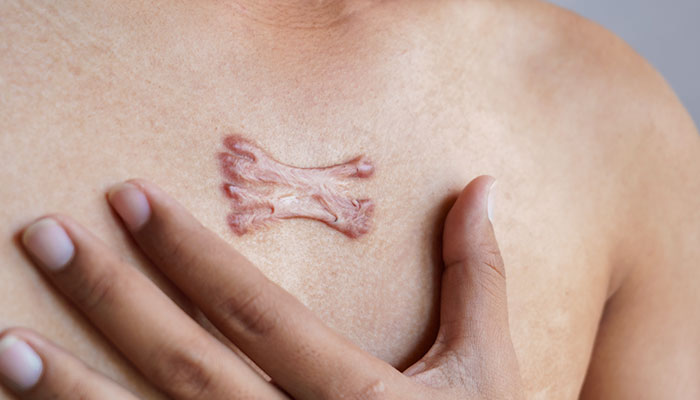Keloids can be difficult to manage because they tend to grow beyond the boundaries of the original wound and may return even after treatment. With modern dermatology, patients now have access to advanced solutions, ranging from injections to surgery and laser procedures. If you’re considering getting professional help, several clinics, including SKN Cosmetic Clinic, offer comprehensive Keloid Treatment in Islamabad. But one of the most common concerns patients have is: what happens after the treatment? Understanding the recovery process is essential to achieving lasting results and minimizing the chances of recurrence.
Why Recovery Matters in Keloid Treatment
Keloids are notorious for coming back if not managed properly. Even after successful treatment, the skin remains vulnerable during the healing period. Recovery plays a vital role because:
- It determines how well the scar tissue responds to treatment.
- Proper aftercare reduces the chances of recurrence.
- Good skin care supports faster healing and better cosmetic results.
- Following your dermatologist’s instructions helps minimize side effects.
Recovery After Different Types of Keloid Treatments
Not all keloid treatments are the same, so recovery varies depending on the procedure. Here’s what to expect from each option:
1. Steroid Injections
- Recovery process: Minimal downtime, but mild tenderness, redness, or swelling may occur.
- Aftercare tips: Avoid scratching the treated area. Apply soothing creams if prescribed.
- Healing time: Discomfort usually subsides within a few days.
2. Laser Treatment
- Recovery process: Mild redness, swelling, or warmth in the area may appear.
- Aftercare tips: Protect the skin from sun exposure, apply cold compresses if needed, and follow skincare routines recommended by your dermatologist.
- Healing time: Skin typically improves in 5–7 days, with long-term results visible after multiple sessions.
3. Surgical Removal
- Recovery process: The area may feel sore, and stitches (if used) require proper care.
- Aftercare tips: Keep the wound clean and dry, avoid strenuous activities, and attend follow-up appointments. Often, additional therapies like steroid injections or radiation are suggested post-surgery to prevent recurrence.
- Healing time: Usually 2–4 weeks, depending on wound size and location.
4. Cryotherapy
- Recovery process: The treated area may blister or feel numb.
- Aftercare tips: Avoid popping blisters, keep the site covered if necessary, and use soothing ointments.
- Healing time: Full recovery can take 1–2 weeks.
General Recovery Guidelines for All Patients
No matter which treatment you undergo, certain universal recovery steps apply:
- Follow Medication Instructions – Whether it’s topical creams, oral medications, or injections, never skip prescribed treatments.
- Protect the Skin – Use sunscreen and avoid prolonged sun exposure to reduce pigmentation changes.
- Avoid Irritation – Don’t scratch, rub, or apply harsh products on the treated area.
- Moisturize Regularly – Use dermatologist-approved moisturizers to keep the skin hydrated and healthy.
- Stay Consistent with Follow-Ups – Regular checkups help your doctor monitor healing and prevent regrowth.
Timeline of Recovery After Keloid Treatment
Here’s a general breakdown of what patients can expect:
- First 48 hours: Mild swelling, redness, or tenderness around the treated site.
- 1 week: Visible improvement in discomfort; treated skin begins to settle.
- 2–4 weeks: Scar appearance improves significantly; surgical patients may have stitches removed.
- 1–3 months: Long-term healing continues, and final results become clearer. Additional sessions (for laser or injections) may be scheduled during this phase.
Tips to Prevent Keloid Recurrence During Recovery
Since recurrence is one of the biggest concerns, following preventive care is crucial:
- Avoid unnecessary skin trauma: Minimize piercings, tattoos, or elective surgeries in areas prone to keloids.
- Use silicone sheets or gels: These can be applied during recovery to flatten scars.
- Healthy lifestyle choices: Balanced nutrition, staying hydrated, and avoiding smoking promote better healing.
- Stress management: Stress can delay healing, so adopting relaxation techniques may help.
Emotional Aspect of Recovery
It’s important to note that keloids not only affect physical appearance but can also impact self-esteem. During recovery:
- Patients may feel anxious about whether the scar will return.
- Visible redness or swelling may temporarily affect confidence.
- Support from dermatologists, family, and friends can make the process smoother.
Remember, patience is key—true results unfold gradually, and rushing the process can hinder healing.
When to Contact Your Doctor During Recovery
While mild side effects are common, you should immediately consult your dermatologist if you notice:
- Excessive pain or swelling that doesn’t improve
- Signs of infection (pus, fever, spreading redness)
- Unusual pigmentation changes
- Rapid regrowth of scar tissue
Timely professional guidance ensures complications are addressed before they worsen.
Final Thoughts
Recovering from keloid treatment is just as important as the procedure itself. Whether you undergo injections, laser therapy, cryotherapy, or surgery, proper aftercare helps reduce recurrence, speeds up healing, and ensures smoother results. The recovery journey requires patience, consistent follow-ups, and disciplined skincare. If you’re considering professional treatment, SKN Cosmetic Clinic offers expert dermatologists and advanced solutions for personalized Keloid Treatment in Islamabad to help you achieve long-lasting results with confidence.









